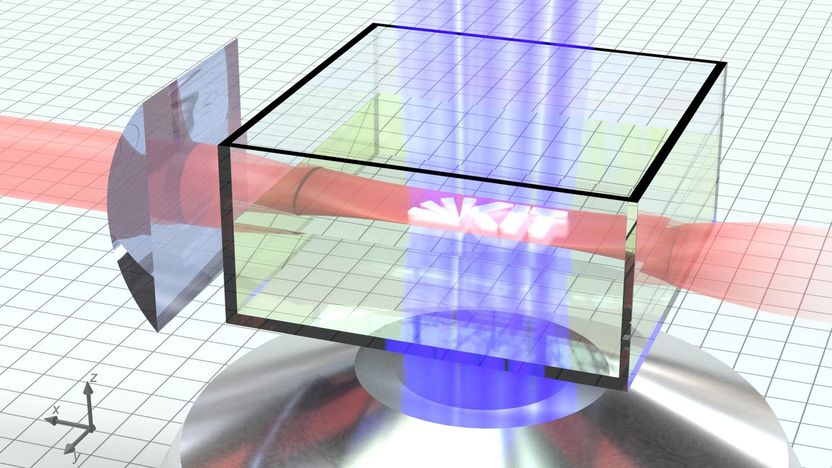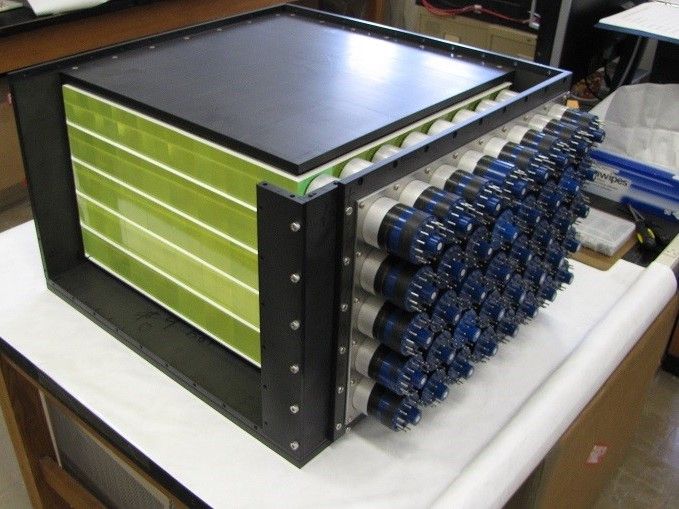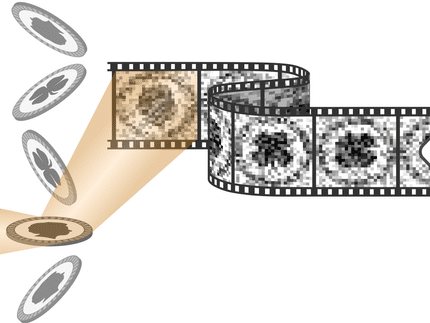Unprecedented view of the diffusion and rotation of fullerene molecules by graphene encapsulation
carbon is one of the most versatile elements: it forms the basis for an enormous number of chemical compounds, it has several allotropes of different dimensionality, and it exhibits many different bonding geometries. For this reason, carbon materials have had a special place in materials research for a long time. Although the three-dimensional forms of carbon -- diamond and graphite -- are known since ancient times, it took until 1985 before the first low-dimensional carbon allotrope, the quasi-zero-dimensional fullerene, was discovered. Soon after this, in 1991, the one-dimensional carbon nanotubes were brought to the attention of the scientific community, and in 2004 the two-dimensional carbon allotrope, graphene, became experimental reality. Different combinations of carbon allotropes such as fullerene-filled carbon nanotubes (carbon peapods) and graphite intercalated by fullerenes have been made already.

This is a computer model of a fullerene layer between two sheets of graphene.
Copyright: Kimmo Mustonen/ Jannik Meyer, Universität Wien
The scientists at the University of Vienna demonstrate a hybrid carbon system, termed buckyball sandwich, in which a single layer of fullerenes is encapsulated between two graphene sheets. The analysis of the structure via atomically resolved scanning transmission electron microscopy provided insights into the dynamics of the molecules. At the edges of the fullerene layers, the scientists could observe the diffusion of individual fullerenes within the pocket of the graphene sandwich: Due to the movement of the fullerenes, they are only partially visible in the image (recorded line by line, so that mobile fullerenes only appear on some of the lines). Moreover, fullerenes were found to rotate inside the sandwich -- however this rotation was blocked when the fullerenes merged into larger objects due to extended electron irradiation.
With the fullerene-graphene system, the scientists have created a new material that fills a gap in the available combinations of hybrid carbon heterostructures. The graphene sandwich provides a nanoscale reaction chamber and a clean interface to the microscope vacuum, that allows the observation of molecular dynamics in the transmission electron microscope. Therefore the researchers expect that this work also opens many new avenues for studying the structure and dynamics of molecules similarly encapsulated in the 2D space between graphene sheets.
Original publication
R. Mirzayev, K. A. Mustonen, M. R. A. Monazam, A. Mittelberger, T. J. Pennycook, C. Mangler, T. Susi, J. Kotakoski, J. C. Meyer, Buckyball sandwiches. Sci. Adv. 3, e1700176 (2017)
Original publication
R. Mirzayev, K. A. Mustonen, M. R. A. Monazam, A. Mittelberger, T. J. Pennycook, C. Mangler, T. Susi, J. Kotakoski, J. C. Meyer, Buckyball sandwiches. Sci. Adv. 3, e1700176 (2017)
Topics
Organizations
Other news from the department science

Get the chemical industry in your inbox
By submitting this form you agree that LUMITOS AG will send you the newsletter(s) selected above by email. Your data will not be passed on to third parties. Your data will be stored and processed in accordance with our data protection regulations. LUMITOS may contact you by email for the purpose of advertising or market and opinion surveys. You can revoke your consent at any time without giving reasons to LUMITOS AG, Ernst-Augustin-Str. 2, 12489 Berlin, Germany or by e-mail at revoke@lumitos.com with effect for the future. In addition, each email contains a link to unsubscribe from the corresponding newsletter.
Most read news
More news from our other portals
Last viewed contents
How to measure oxygen coefficient in complex oxides
Gibbs_algorithm
Sibutramine
Meg_Whitman

Joining forces: fast-as-lightning 3D microprinting with two lasers - Micrometer-sized Structures in Just the Blink of an Eye
Biological_small-angle_X-ray_scattering
Luminiferous_aether
Micromeritics Instrument Corp. acquires Freeman Technology
Self-envy




























































